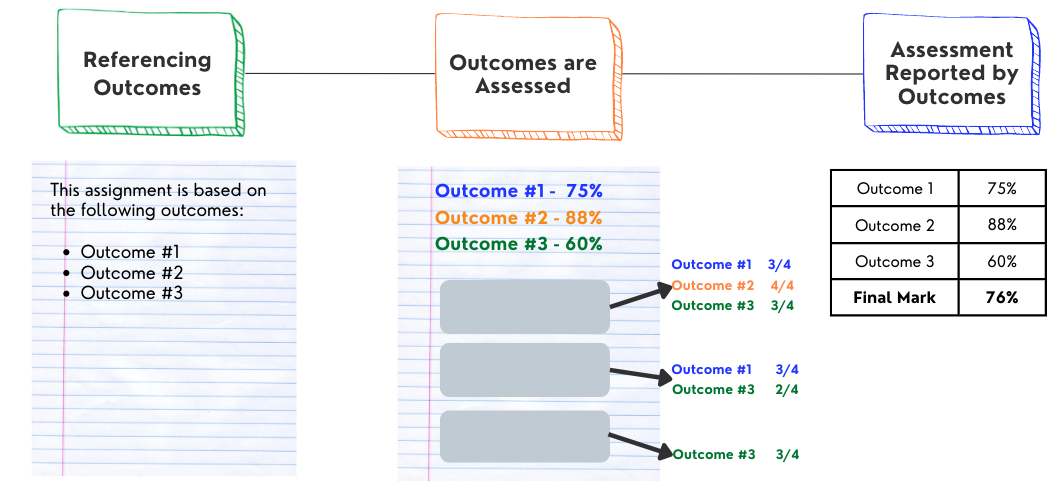Single-Point Rubrics: Exceeding Expectations
- You write the same comments on several assignments
- You decide how to assess after the assignments are handed in
- You realize after grading a few papers that your students didn’t understand the assignment expectations (Stevens & Levi, 2005)
Knowing about these reasons for rubrics, I sat down last fall to create few rubrics for the assignments in an undergraduate class I was about to teach. I started with the “Good” or “Excellent” column, as this is where I recommend starting. That was pretty easy as it simply explains the criteria for the assignment.
The next thing I needed to do was to fill in the lower columns (e.g., minimal pass, satisfactory) and ran into difficulties. I found myself guessing at what it is that students may or may not do to deviate from the criteria. This was especially difficult since I like to be as descriptive and objective as possible with the criteria I put in the cells, trying to avoid vague terms, such as “acceptable” and “good”. Filling in these cells was really challenging and would have potentially put me in a bind when grading if my guesses turned out to be wrong. I have been in that situation before and it is not a good feeling to look at your rubric descriptors and to look at a student’s assignment and realize that you have trapped yourself into either giving too high or too low of a grade based on those start-of-term guesses. These guesses are even more difficult if it is a new-to-you course or a new assignment. Due to these challenges, I ended up with more of a checklist and comment box than a fully filled-in rubric.
This past summer, a blog post by Jennifer Gonzalez came across my email that explained the concept of a “Single-Point Rubric”. I think the Single-Point Rubric is the answer to my struggles. It is essentially the “Good” or “Excellent” column that explains the criteria for the assignment and a column on each side surrounds it. These columns are labelled “Concerns: Areas that Need Work” and “Advanced: Evidence of Exceeding Standards”. This serves many of the same purposes as a rubric full of filled-in cells plus it provides a great and clear means of providing positive and negative feedback on each of the criterion.
 I still see advantages to having a fully filled-in rubric, but for new-to-you assignments and courses, where you really are guessing at student performance, I think the “Single-Point Rubric” is a great first step in providing clear criteria. I would highly recommend reading Jennifer’s post and seeing if it will meet your needs, as well.
I still see advantages to having a fully filled-in rubric, but for new-to-you assignments and courses, where you really are guessing at student performance, I think the “Single-Point Rubric” is a great first step in providing clear criteria. I would highly recommend reading Jennifer’s post and seeing if it will meet your needs, as well.



One Comment
Pingback: